
Birds Around Las Vegas, Wildlife Around Las Vegas
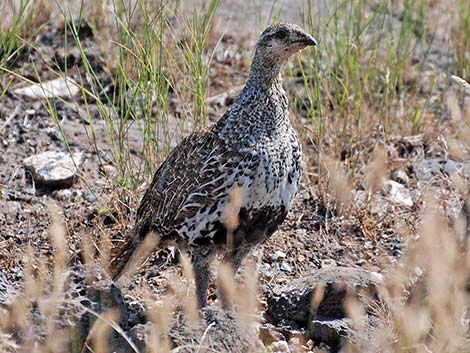 |
General Description: Greater Sage-Grouse (Centrocercus urophasianus), also simply called "sage grouse," are large ground birds nearly the size of a turkey. Males are gray-brown overall except a black face and black collar, and they have a long spiky tail. Females are smaller than males and are gray-brown overall. Both genders are counter-shaded with black on the belly. Taxonomy: Galliformes, Phasianidae, Tetraoninae Favored Habitat: Open country with sagebrush. Sage grouse have two kinds of fecal droppings: a black tar-like dropping and a dry, cylindrical pellet dropping. The black, tar-like droppings (cecal tar), which start out green and dry to black, are a result of their unique digestive system that separates toxins (terpenes) from the sagebrush they consume, especially during the winter when their diet consists almost entirely of sagebrush. The yellowish-white, cylindrical pellets (pellets) contain the digested remains of sagebrush leaves. Incubating female sage grouse leave large piles of scat, called clockers, near their nests. |
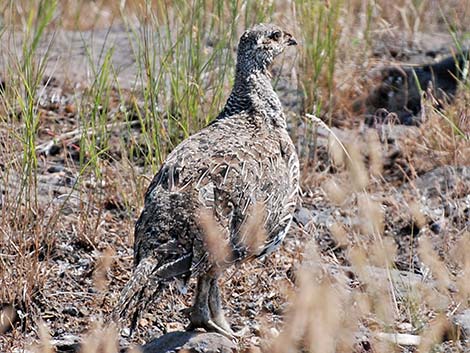 |
Where to Find: Sage-grouse occur north and east of the Las Vegas area. Look for them in northern Nevada or southern Utah in areas with sagebrush. Sage-Grouse eat sagebrush, so look for them in sagebrush country. Comments: Some people think Greater Sage-Grouse occur in southern Nevada, but I think they are confused by Chukar or Wild Turkeys, or possibly confused by the black belly on Gambel's Quail. |
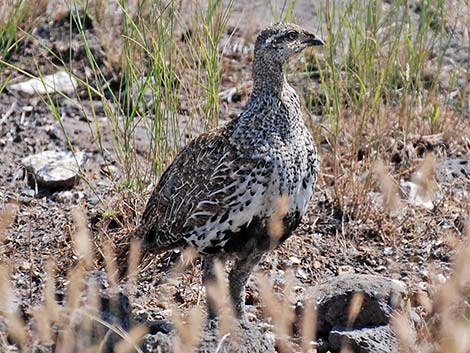 |
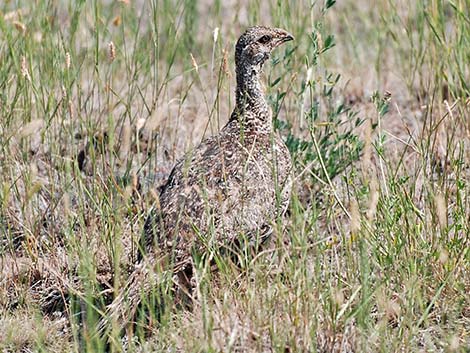 |
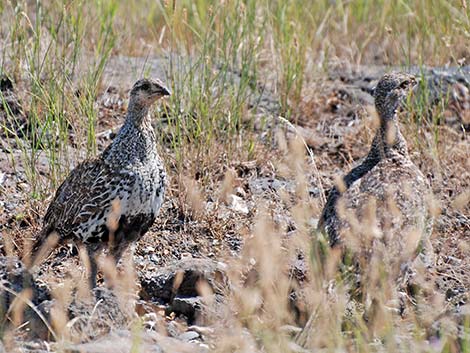 Two Sage Grouse |
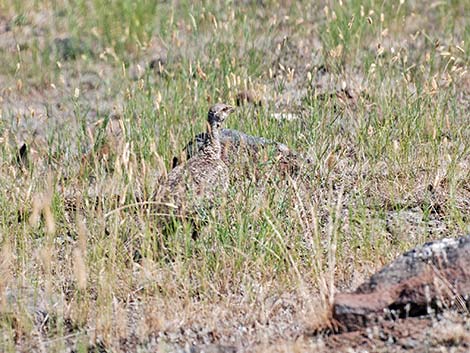 Sage Grouse disappearing into sparse, but high, grass |
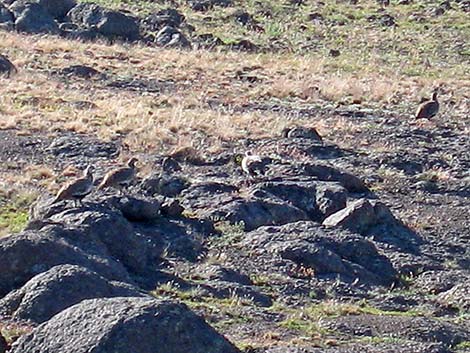 Sage Grouse on rocky terrain |
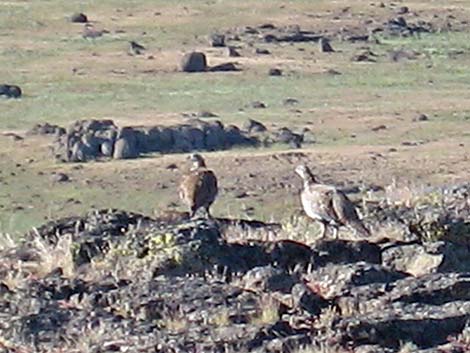 Sage Grouse on rocky terrain |
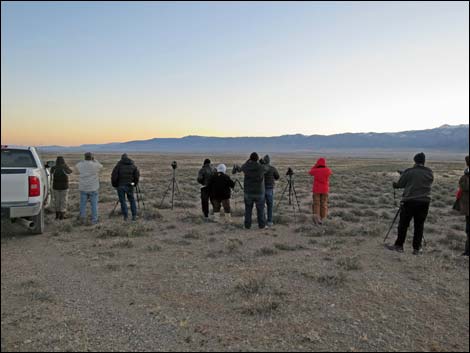 Birders overlook a lek from afar |
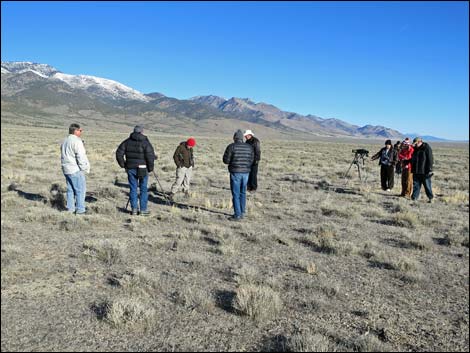 After the birds are gone, birders at the lek |
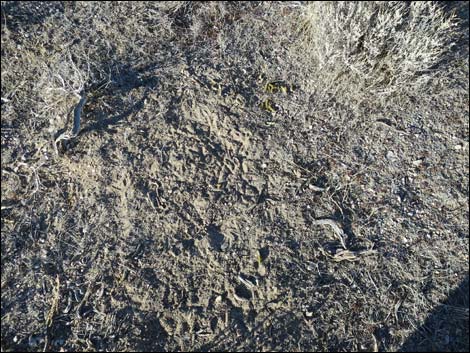 Loose dirt and footprints |
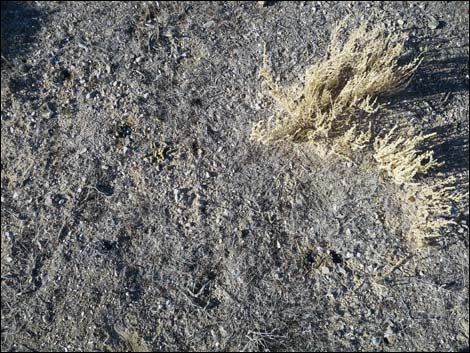 Loose dirt, footprints, and scat |
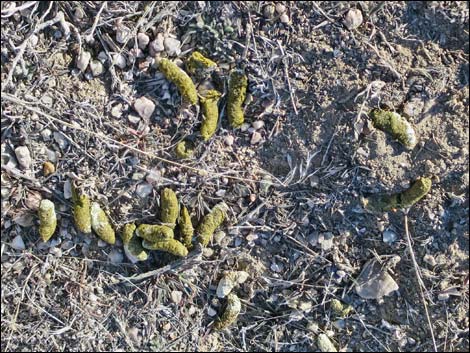 Fresh scat piles |
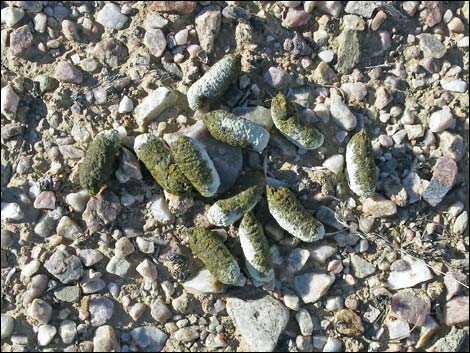 Fresh scat pile |
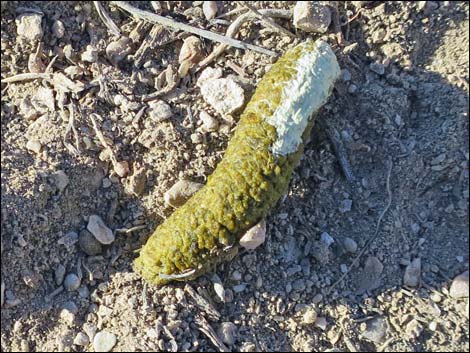 Fresh scat (firm) |
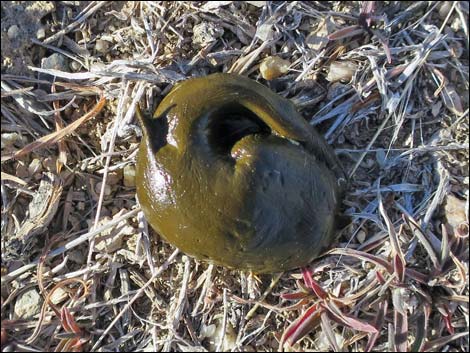 Fresh scat (cecal tar) |
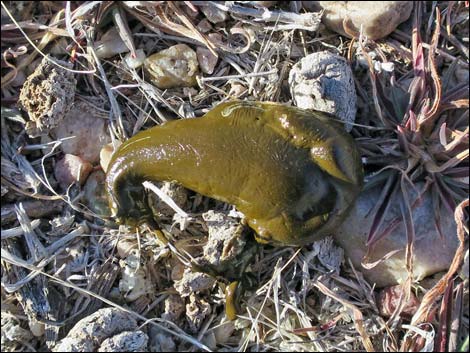 Fresh scat (loose) |
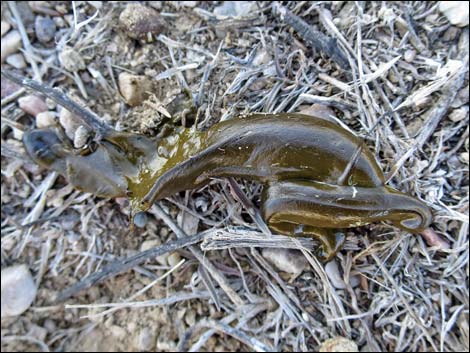 Fresh scat (loose) |
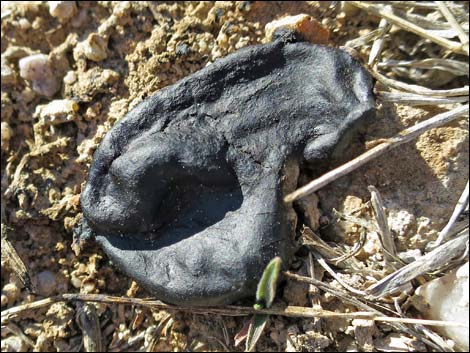 Dried cecal tar (one day old) |
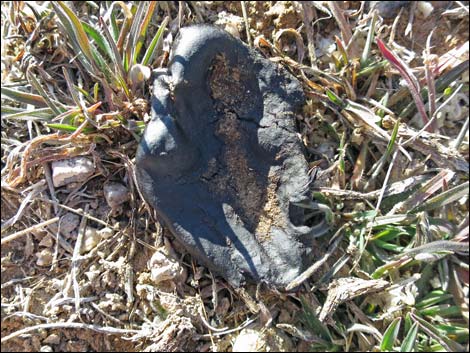 Dried cecal tar (one day old) |
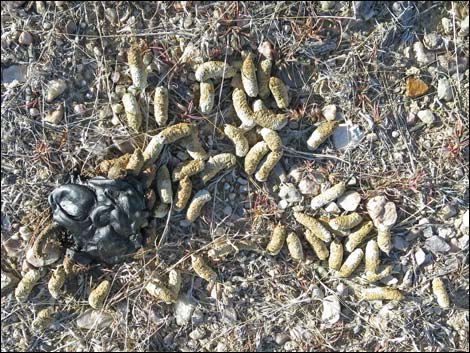 Older dry scat and loose pile (clocker?) |
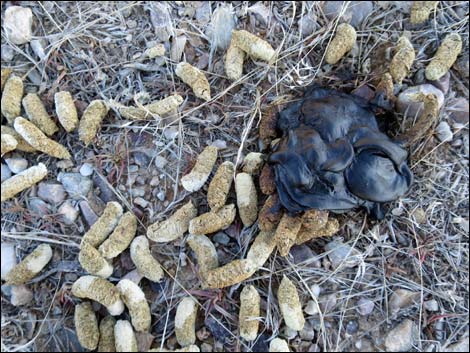 Older dry scat and loose pile (clocker?) |
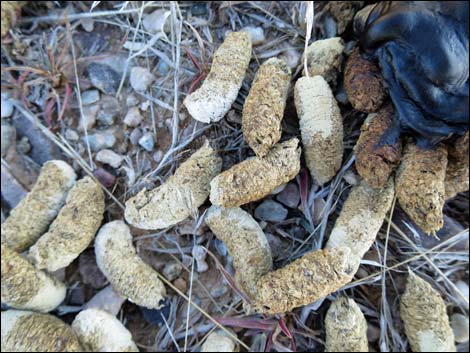 Older dry scat and loose pile |
 More to come ... |
Note: All distances, elevations, and other facts are approximate.
![]() ; Last updated 250429
; Last updated 250429
| Grouse | Birds Around Las Vegas | Wildlife Around Las Vegas | Glossary | Copyright, Conditions, Disclaimer | Home |